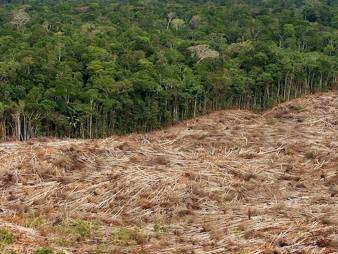 A new study published in Science on October 2 reveals that, despite some progress, more needs to be done to reach an internationally agreed set of biodiversity targets by 2020.
A new study published in Science on October 2 reveals that, despite some progress, more needs to be done to reach an internationally agreed set of biodiversity targets by 2020.
Ecosystems and the biodiversity that underpin them are vital for sustaining human life. Recognizing this, in 2010, 193 nations agreed on a set of 20 biodiversity-related goals, known as Aichi Biodiversity Targets.
At this mid-way point to the 2020 deadline, a team of 51 experts from over 30 institutions have assessed progress towards the Aichi Biodiversity Targets, and projected whether or not they will be met. They reveal that despite increasing management efforts and financial investment in protecting biodiversity, and a remarkable expansion in protected areas on land and at sea, accumulated and increasing pressures on the natural world mean it is unlikely that most of the targets will be met by 2020 if we remain on our current trajectory.
To assess progress towards the Aichi Biodiversity Targets, experts used a broad range of data on biodiversity and human indicators such as global bottom-trawl fishing pressure, efforts to manage invasive species, financial investment, and public understanding of biodiversity. They then projected these trends to assess the state of biodiversity in 2020.
“The Aichi Biodiversity Targets represent the most important international commitment towards preserving biodiversity,” says Derek Tittensor, Lead Author and Senior Marine Biodiversity Scientist at United Nations Environment Programme World Conservation Monitoring Centre (UNEP-WCMC) and Adjunct Professor at Dalhousie University. “However, our projections show that the impact of current management and policy efforts is not enough to halt biodiversity declines and meet most of the targets by 2020.”
As shown in the Science paper, increased pressures on biodiversity suggest that the situation is worsening. The consumption of natural resources is increasing. Decreasing wetland extent and declining coral cover reflect large-scale habitat loss. At current rates, Aichi Biodiversity Targets to halve the rate of natural habitat loss and sustainably harvest all fish stocks will not be achieved – but there remains sufficient time to change this outcome.
“The Aichi Biodiversity Targets are still within reach,” says Dr. Braulio Ferreira de Souza Dias, Executive Secretary of the Secretariat of the Convention on Biological Diversity (CBD). “We have numerous examples of successful policy efforts to halt or slow biodiversity loss. This study acts as a wake-up call that these efforts should become more widespread.”
Substantial progress is being made on individual targets. Certification schemes for forests and fisheries are becoming more widespread. Policy interventions have resulted in reduced deforestation and led to better managed fisheries stocks in some regions. There is also growing public awareness of biodiversity. Financial resources are being made available to address the biodiversity crisis, but more investment is needed to fulfil all targets.
The results of this study feed into a global assessment of the status and trends of biodiversity – the fourth edition of the Global Biodiversity Outlook (GBO-4) – which will be released on 6 October during the meeting to the Conference of the Parties to the Convention on Biological Diversity in Pyeongchang, Republic of Korea. During this meeting, the necessary actions and novel solutions required to meet the Aichi Biodiversity Targets and preserve biodiversity will be discussed.
Click here to read/download the Full Study – “A Mid-Term Analysis of Progress toward International Biodiversity Targets”.
Source: UNEP-WCMC.
About the Aichi Biodiversity Targets
The Aichi Biodiversity Targets for 2011-2020 were adopted at the Convention on Biological Diversity’s tenth meeting of the Conference of the Parties in October 2010 in Nagoya, Aichi Prefecture, Japan. They formed part of the revised and updated Strategic Plan for Biodiversity which provides an overarching framework on biodiversity for biodiversity-related conventions, the United Nations system, and all partners engaged in biodiversity management and policy development.
The mission of the plan is to “take effective and urgent action to halt the loss of biodiversity in order to ensure that by 2020 ecosystems are resilient and continue to provide essential services, thereby securing the planet’s variety of life, and contributing to human well-being, and poverty eradication. To ensure this, pressures on biodiversity are reduced, ecosystems are restored, biological resources are sustainably used, and benefits arising out of utilization of genetic resources are shared in a fair and equitable manner; adequate financial resources are provided, capacities are enhanced, biodiversity issues and values mainstreamed, appropriate policies are effectively implemented, and decision-making is based on sound science and the precautionary approach.”


















